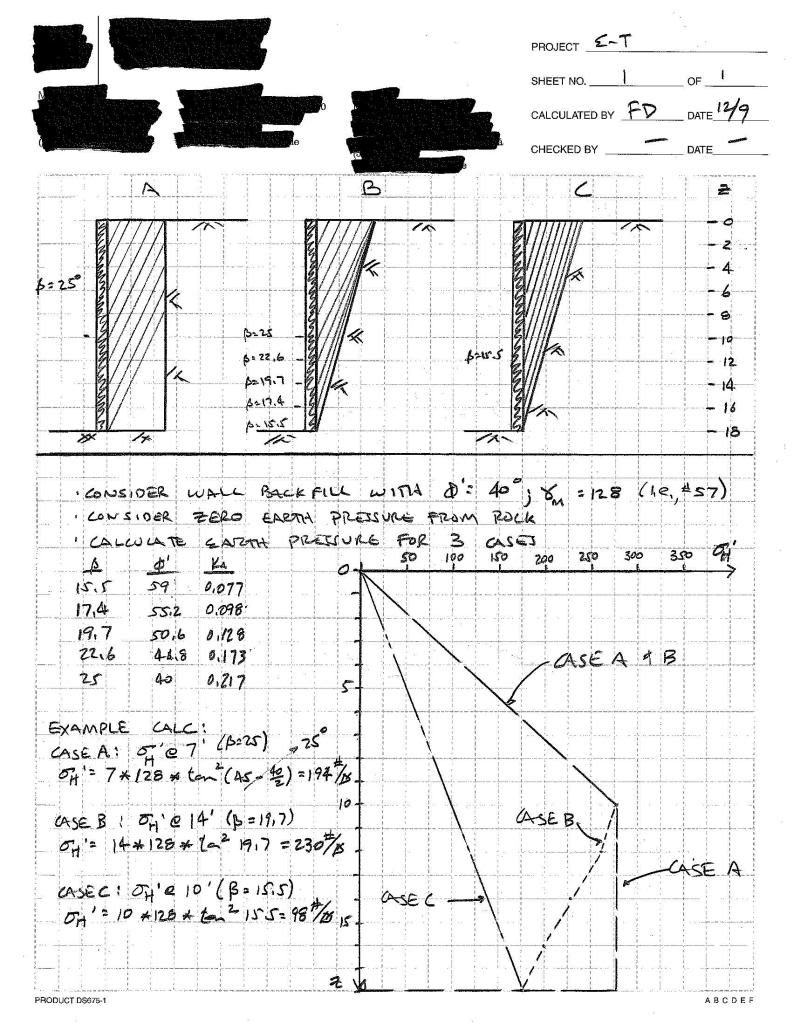This isn't a simple question, even if the basalt is all bulletproof and would not contribute any active force (assuming that the cut is stable and wouldn't slide even without the wall). Depending on width of the space, and the type and compaction of backfill, I can see several different possibilities:
Arching could cause very large lateral forces.
OR
Compaction pressures on a stiff wall could cause very high lateral stresses, above Ko near the top of the wall. See, for example, Duncan, Williams, Sehn, and Seed in the ASCE JGE, December 1991, with errata in March 1992 (important), and discussion and closure in July 1993 (also important). This is based on placement and compaction of the fill in lifts, which imposes pressure higher than Ko at the top of the fill. If the horizontal dimension of the wedge of fill is small, it may not take very much deflection of the wall to allow enough horizontal strain that the pressure is much lower than with a rigid wall.
OR
If the fill is not compacted much and/or the wall is flexible, you might be able to modify the Coulomb active pressure (based on sliding block) to account for the hypothetical sliding surface being steeper than 45+phi/2. Fattdad is, I believe, correct when he says you could not get the Rankine active condition (backfill material all at yield, with sigma1 vertical and sigma3 horizontal).
If it were me doing the design, I would start with the 2nd one, and see whether a reasonable reduction in the pressure makes a big difference in the design. Depending on height, length, and results of analysis, the cost difference to the client could be pretty minor, trading off hours you don't bill him for the additional study to nail down the loads better, versus the additional rebar. Or, the cost savings could be huge compared to the cost of your time to refine the analysis.
Could you compact the majority of the backfill well enough to control settlement, but leave a thin zone at the wall and abutment contacts that is not compacted as well, so the pressure is not so high after each lift is placed? EXCEPTION: If this wall forms the spillway chute for a dam, you need tight compaction against both sides, requiring wheel rolling, jumping jacks, pogo sticks, etc.
How's that for some vague and speculative advice?
Regards,
DRG

